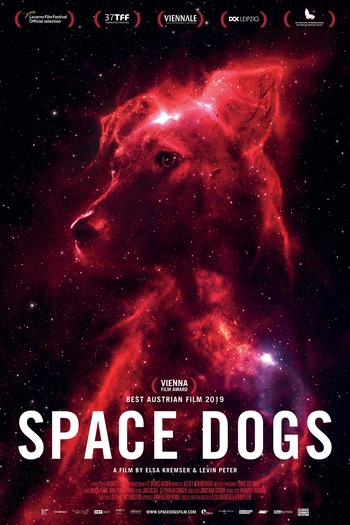Review: Space Dogsby Jeff Foust
|
| The directors uncovered archival footage—rarely, if ever, seen before—of the early Soviet effort to send dogs to space. |
Indeed, after that opening scene talking about Laika’s demise, the movie focuses on a couple of stray dogs wandering through the city, with extended periods with no narration. The dogs meander through city streets, scavenge for food, and, in one particularly brutal sequence, chase, capture, and kill a cat. It’s often left for the viewer to figure out the connection to Laika and the Soviet space program’s early use of dogs to determine if humans could survive spaceflight. (In one particularly odd tangent, the narrator discusses how Americans used chimpanzees instead of dogs; this is illustrated with footage of a chimpanzee being taken with handlers in Moscow to a birthday party and then a nightclub.)
There are some historical interludes in the film. The directors uncovered archival footage—rarely, if ever, seen before—of the early Soviet effort to send dogs to space. That includes preparations for their flights, like being placed in centrifuges and being instrumented for their flights. There’s also film from a later flight with dogs who did survive their mission and returned to Earth, and puppies later born from those dogs. That footage is interesting, but there’s far less of it than contemporary video of those Moscow strays.
Publicity material for Space Dogs says the film has “meditative pacing that recalls the work of Andrei Tarkovsky,” the Russian director of Solaris fame. That pacing is perhaps better described as ponderous, or simply slow, at times straining the patience of viewers who thought they were going to see dogs in space. The film is less about the “story of Laika” and instead an artistic interpretation of the journeys those dogs took into space, seen through the prism of those who, like Laika once did, roamed the streets of Moscow.
Note: we are temporarily moderating all comments submitted to deal with a surge in spam.
